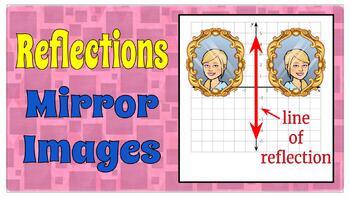Reflections: Flipping over the x- and y-axis

Also included in
- You are purchasing 7 editable sets of the animated Google Slides used to make these videos. All slides are animated as seen in the video lessons. You may use these slides as guided lessons, scaffolded class notes, print or share student practice slides as task cards, and/or adapt using Pear Deck forPrice $18.40Original Price $23.00Save $4.60
Description
You are purchasing an editable set of the Google Slides used to make this video. All slides are animated as seen in the video lesson. You may use these slides as a guided lesson, scaffolded class notes, print or share student practice slides as task cards, and/or adapt using Pear Deck for whole class instruction.
In this video lesson we will learn how to reflect images in the coordinate plane over the x and y axis. We will first identify the line of reflection given in the instructions. We will then determine the distance the original point is from the line of reflection and plot an image point over the line of reflection the same distance. We will reflect one point at a time for the given figure. Each image point or vertex will be labeled with a ' which is read as prime. We will learn the rule for reflecting a point in the x-axis to be (x, y) to (x, -y) and the rule for reflecting a point in the y-axis to be (x, y) to (-x, y). When a point is reflected in the x-axis the x-coordinate remains the same and the y-coordinate the opposite. When a point is reflected in the y-axis the y-coordinate remains the same and the x-coordinate is the opposite. All reflected images are congruent to the original figures which means that all corresponding sides and corresponding angles are equal measures. Student practice is embedded in the lesson with modeled exemplar solutions.



